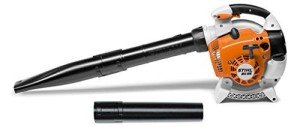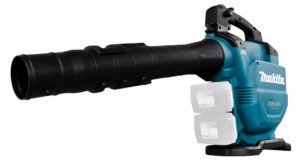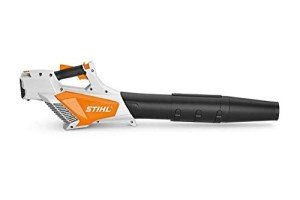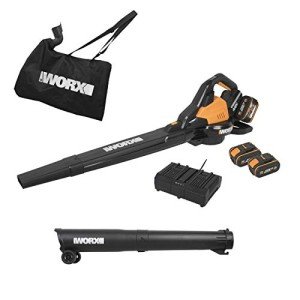In the garden care industry, the significance of efficient tools cannot be overstated. Among the plethora of options available, the Stiga vacuum blower grinder and the 100E 3-in-1 vacuum blower grinder stand out for their versatility and effectiveness. Despite having similar functionalities, understanding their differences and advantages is crucial in making an informed decision for garden maintenance. This guide delves into a comprehensive comparison of the two models, highlighting specifications, features, and usability.
Overview of Both Models
Before diving into the detailed comparison, it is important to outline what each of these models brings to the table.
Stiga Vacuum Blower Grinder
The Stiga brand is synonymous with quality gardening tools, offering an array of products for maintenance and landscaping. The Stiga vacuum blower grinder is an example of their commitment to durable and efficient gardening solutions.
Key Features:
- Engine Type: Two-stroke
- Weight: Approximately 4.5 kg
- Power Output: 3.4 HP
- Air Flow Speed: Adjustable up to 305 km/h
- Collector Volume: 45 liters
- Vacuum Ratio: 10:1 (taking into consideration leaf shreds)
100E 3-in-1 Vacuum Blower Grinder
The 100E model is a more compact and lightweight option designed for homeowners and casual gardeners. This device emphasizes ease of use and practicality.
Key Features:
- Engine Type: Electric motor
- Weight: Approximately 3.0 kg
- Power Output: 1.2 HP
- Air Flow Speed: Adjustable up to 240 km/h
- Collector Volume: 30 liters
- Vacuum Ratio: 5:1 (leaf shredding)
Detailed Comparison Table
| Feature | Stiga Vacuum Blower Grinder | 100E 3-in-1 Vacuum Blower Grinder |
|---|---|---|
| Engine Type | Two-stroke | Electric motor |
| Weight | 4.5 kg | 3.0 kg |
| Power Output | 3.4 HP | 1.2 HP |
| Air Flow Speed | Up to 305 km/h | Up to 240 km/h |
| Collector Volume | 45 liters | 30 liters |
| Vacuum Ratio | 10:1 | 5:1 |
| Noise Level | Higher due to engine type | Quieter operation |
| Fuel Type | Gasoline | Electric |
| Ideal Use | Large gardens and commercial | Small to medium gardens |
Pros and Cons
Stiga Vacuum Blower Grinder
Pros:
- Power: With a significantly higher power output than the 100E, the Stiga model performs exceptionally well in handling larger gardens and tougher debris.
- Collecting Efficiency: The larger collector volume and vacuum ratio enable efficient collection and shredding of leaves.
- Versatile Functions: It performs well as a blower, vacuum, and grinder, making it a versatile tool for various gardening tasks.
Cons:
- Weight: At 4.5 kg, it can feel heavy during prolonged use.
- Noise Level: The two-stroke engine produces more noise compared to electric models, potentially causing disturbance in residential areas.
- Maintenance Needs: Requires regular maintenance due to the engine type.
100E 3-in-1 Vacuum Blower Grinder
Pros:
- Lightweight: Weighing only 3.0 kg, it is easier to handle and maneuver, making it a favorite for casual users or those who may have physical limitations.
- Quieter Operation: The electric motor ensures a quieter performance, ideal for gardens close to homes.
- Lower Maintenance: With fewer mechanical components than gasoline engines, it typically requires less maintenance.
Cons:
- Power Limitations: The lower power output makes it less efficient for heavy-duty tasks, particularly in large gardens.
- Collector Size: A smaller collector volume may require more frequent emptying during extensive clean-ups.
- Limited Mobility: Being electric, its movement will be restricted to areas near power outlets unless it is a battery-powered model.
FAQs
1. Which model is more powerful, Stiga or 100E?
The Stiga vacuum blower grinder is more powerful with a 3.4 HP output compared to the 1.2 HP of the 100E model.
2. Can the 100E handle heavy debris?
While the 100E can manage light debris and leaves, it is less effective with heavier tasks due to its lower power output.
3. How often does the Stiga require maintenance?
The Stiga model, being a two-stroke engine, requires more frequent maintenance compared to electric models like the 100E.
4. Is the 100E suitable for small gardens?
Yes, the 100E is an excellent choice for small to medium gardens due to its lightweight design and efficient operation.
5. What is the vacuum ratio, and why is it important?
The vacuum ratio indicates how much smaller the debris becomes once collected. A higher ratio means more efficient shredding, leading to less frequent emptying of the collector.
In review, both the Stiga vacuum blower grinder and the 100E 3-in-1 vacuum blower grinder serve distinct purposes and cater to different gardening needs. The Stiga model stands out for larger gardens and heavier tasks due to its power and efficiency, despite its weight and maintenance requirements. On the other hand, the 100E offers convenience, lower noise levels, and ease of use for small to medium gardens.
Ultimately, the choice between the two depends on the specific needs of the user, such as garden size, type of debris, and preference for power source. By understanding the unique features and advantages of each model, gardeners can make an informed decision, enhancing their gardening experience.






